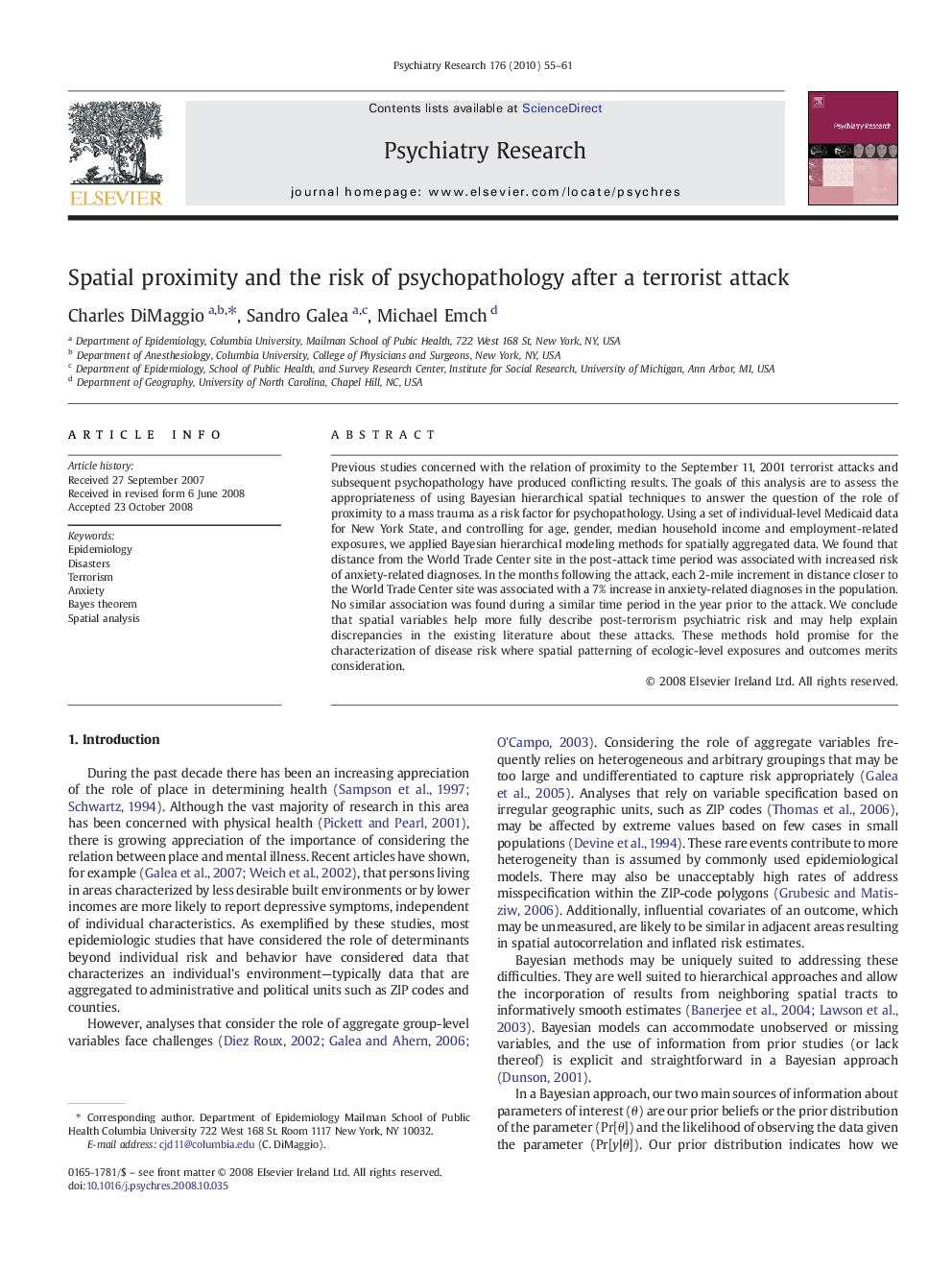| Article ID | Journal | Published Year | Pages | File Type |
|---|---|---|---|---|
| 331987 | Psychiatry Research | 2010 | 7 Pages |
Previous studies concerned with the relation of proximity to the September 11, 2001 terrorist attacks and subsequent psychopathology have produced conflicting results. The goals of this analysis are to assess the appropriateness of using Bayesian hierarchical spatial techniques to answer the question of the role of proximity to a mass trauma as a risk factor for psychopathology. Using a set of individual-level Medicaid data for New York State, and controlling for age, gender, median household income and employment-related exposures, we applied Bayesian hierarchical modeling methods for spatially aggregated data. We found that distance from the World Trade Center site in the post-attack time period was associated with increased risk of anxiety-related diagnoses. In the months following the attack, each 2-mile increment in distance closer to the World Trade Center site was associated with a 7% increase in anxiety-related diagnoses in the population. No similar association was found during a similar time period in the year prior to the attack. We conclude that spatial variables help more fully describe post-terrorism psychiatric risk and may help explain discrepancies in the existing literature about these attacks. These methods hold promise for the characterization of disease risk where spatial patterning of ecologic-level exposures and outcomes merits consideration.
